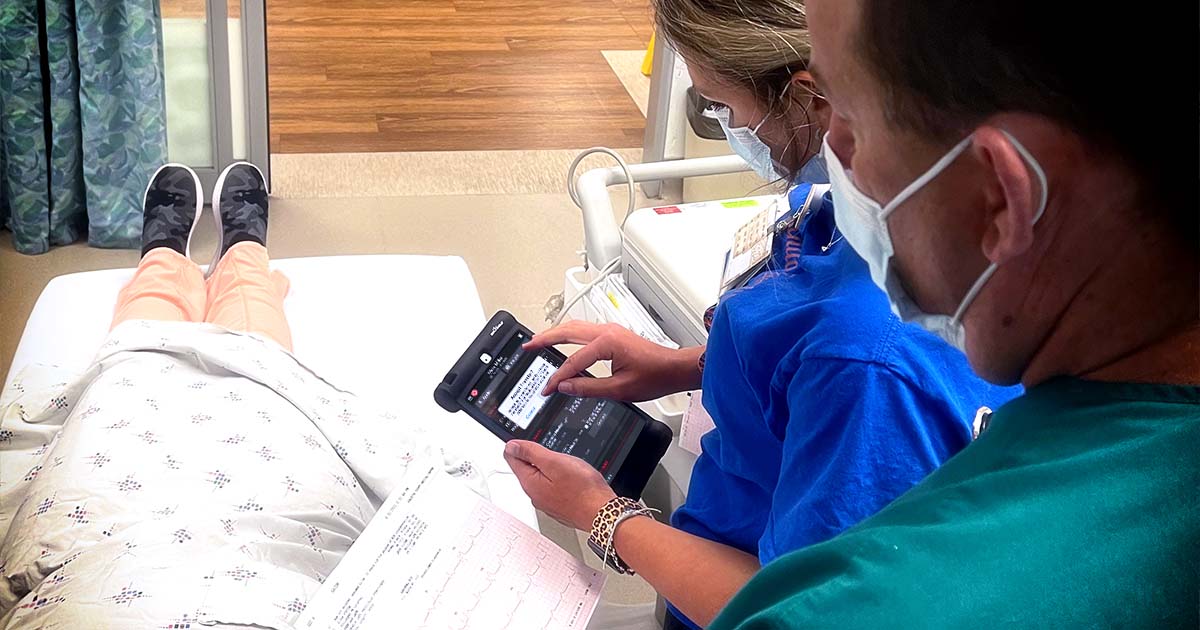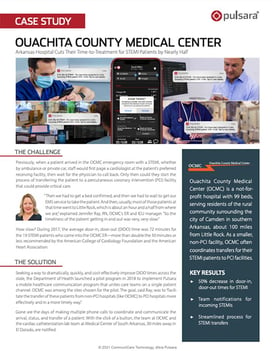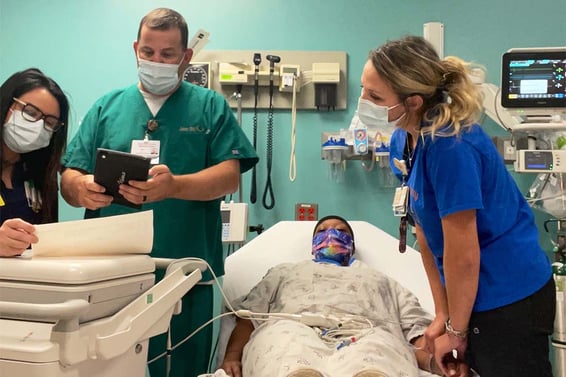Pulsara Around the World - 2025 Recap and January 2026
December Recap After an incredibly busy events year with 102 conferences, trade shows, and sponsorships, December was on the slower side for us, with...
2 min read
 Team Pulsara
:
Dec 08, 2021
Team Pulsara
:
Dec 08, 2021

Ouachita County Medical Center (OCMC) is a not-for-profit hospital with 99 beds, serving residents of the rural community surrounding the city of Camden in southern Arkansas, about 100 miles from Little Rock. As a smaller, non-PCI facility, OCMC often coordinates transfers for their STEMI patients to PCI facilities.
Previously, when a patient arrived in the OCMC emergency room with a STEMI, whether by ambulance or private car, staff would first page a cardiologist at the patient’s preferred receiving facility, then wait for the physician to call back. Only then could they start the process of transferring the patient to a percutaneous coronary intervention (PCI) facility that could provide critical care. “Then we had to get a bed confirmed, and then we had to wait to get our EMS service to take the patient. And then, usually, most of those patients at that time went to Little Rock, which is about an hour and a half from where we are,” explained Jennifer Ray, RN, OCMC’s ER and ICU manager. “So the timeliness of the patient getting in and out was very, very slow.” How slow? During 2017, the average door-in, door-out (DIDO) time was 72 minutes for the 19 STEMI patients who came into the OCMC ER—more than double the 30 minutes or less recommended by the American College of Cardiology Foundation and the American Heart Association.
 Seeking a way to dramatically, quickly, and cost-effectively improve DIDO times across the state, the Department of Health launched a pilot program in 2018 to implement Pulsara, a mobile healthcare communication program that unites care teams on a single patient channel. OCMC was among the sites chosen for the pilot. The goal, said Ray, was to “facilitate the transfer of these patients from non-PCI hospitals [like OCMC] to PCI hospitals more effectively and in a more timely way."
Seeking a way to dramatically, quickly, and cost-effectively improve DIDO times across the state, the Department of Health launched a pilot program in 2018 to implement Pulsara, a mobile healthcare communication program that unites care teams on a single patient channel. OCMC was among the sites chosen for the pilot. The goal, said Ray, was to “facilitate the transfer of these patients from non-PCI hospitals [like OCMC] to PCI hospitals more effectively and in a more timely way."
After implementing the platform in early 2018, their average DIDO time for STEMI patients quickly dropped from 72 to 41 minutes—a 43 percent decrease. Halfway through 2021, that number continued to decrease to 36 minutes, despite the impact of the COVID-19 pandemic. Within three years on the platform, OCMC cut their DIDO by 50 percent. That’s nearly 4 times less than the average 140-minute DIDO time when transferring to another of their frequent referral hospitals.

Download the case study to learn how Ouachita County Medical Center improved communication about transfers for STEMI patients and cut their door-in, door-out times for STEMI by half.
Within four months, Saline Memorial Hospital in Benton, Arkansas reduced their treatment times for STEMI by 28%. Check out the case study to learn how they did it.

December Recap After an incredibly busy events year with 102 conferences, trade shows, and sponsorships, December was on the slower side for us, with...

Editor's Note: In July 2025, EMS1 and Fitch & Associates released their annual EMS trend survey, What Paramedics Want, proudly sponsored by Pulsara....
![[PRESS RELEASE] Published Research Finds Up to 31% Faster STEMI Treatment Times in Rural Hospital Setting with Pulsara](https://www.pulsara.com/hubfs/_1_website-page-blog-assets/pulsara-hosp-teams-assign-cardio-stemi-rn-1200x701.jpg)
Published research shows how using Pulsara, alongside standardized field activation and a focus on stakeholder relationships, improves STEMI care and...